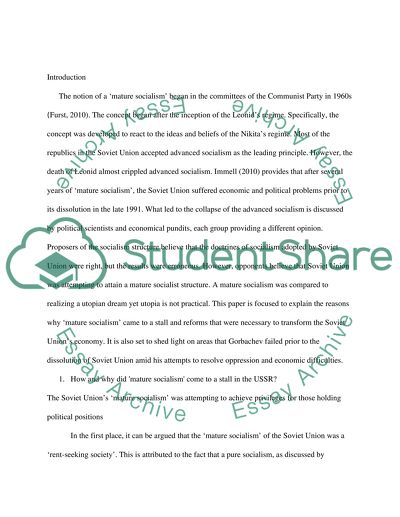Cite this document
(“Collapse of socialism in the USSR: Where did Gorbachev go wrong Essay”, n.d.)
Retrieved from https://studentshare.org/history/1497204-collapse-of-socialism-in-the-ussr-where-did-gorbachev-go-wrong
Retrieved from https://studentshare.org/history/1497204-collapse-of-socialism-in-the-ussr-where-did-gorbachev-go-wrong
(Collapse of Socialism in the USSR: Where Did Gorbachev Go Wrong Essay)
https://studentshare.org/history/1497204-collapse-of-socialism-in-the-ussr-where-did-gorbachev-go-wrong.
https://studentshare.org/history/1497204-collapse-of-socialism-in-the-ussr-where-did-gorbachev-go-wrong.
“Collapse of Socialism in the USSR: Where Did Gorbachev Go Wrong Essay”, n.d. https://studentshare.org/history/1497204-collapse-of-socialism-in-the-ussr-where-did-gorbachev-go-wrong.


